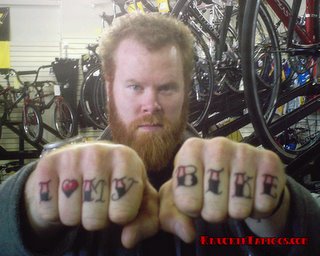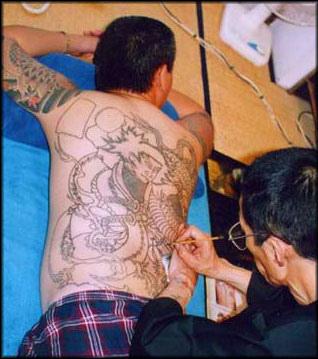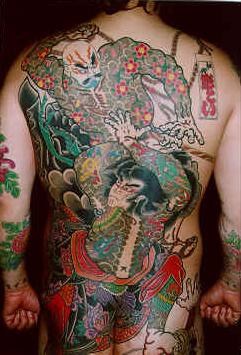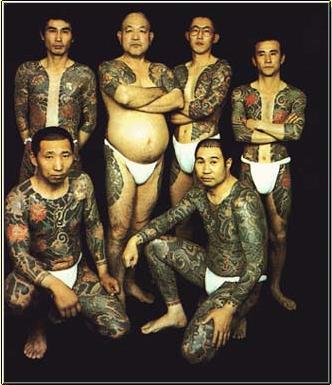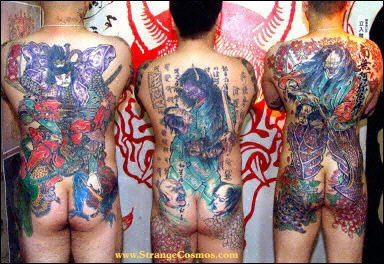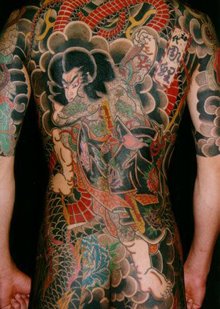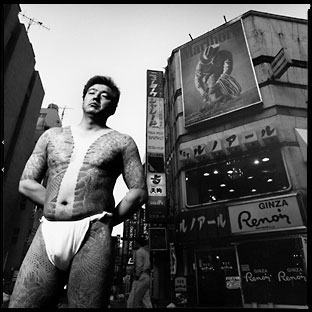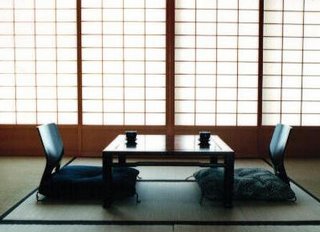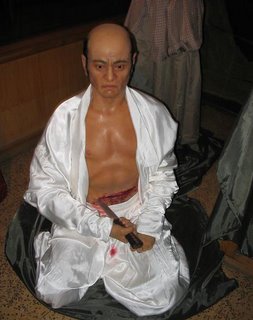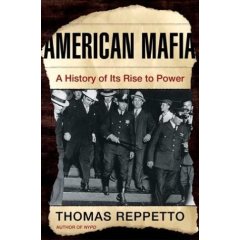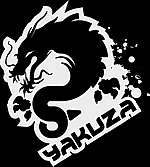Much of the current activities of the yakuza can be understood in the light of their feudal origin. First, they are not a secret society like their counterparts of the Italian mafia and Chinese triads. Yakuza organizations often have an office with a wooden board on the front door, openly displaying their group name or emblem. Members often wear sunglasses and colourful suits so that their professhon can be immediately recognized by civilians (katagi).
Even the way many Yakuza walk is markedly different from ordinary citizens. Their arrogant, wide gait is markedly different from the quiet, unassuming way many Japanese go about their business. Alternatively, they can be more conservatively dressed but when the need arises, they can flash their tattoos to indicate their affiliation. On occasion they also sport insignia pins on their lapels.
Until recently, the majority of yakuza income came from protection rackets in shopping, entertainment and red-light districts within their territory. This is mainly due to the reluctance of such businesses to seek help from the police. The Japanese police are also reluctant to interfere in internal matters in recognized communities such as shopping arcades, schools/universities, night districts and so on. In this sense, yakuza are still regarded as semi-legitimate organizations. For example, immediately after the Kobe earthquake, the Yamaguchi-gumi, whose headquarters are in Kobe, mobilised itself to provide disaster relief services (including the use of a helicopter), and this was widely reported by the media as a contrast to the much slower response by the Japanese government. For this reason, many yakuza regard their income and hustle (shinogi) as a collection of a feudal tax.
Yakuza frequently engage in a uniquely Japanese form of extortion, known as sōkaiya.In essence, this is a specialized form of protection racket.
Instead of harassing small businesses, the yakuza harasses a stockholders' meeting of a larger corporation. They simply scare the ordinary stockholder with the presence of yakuza operatives, who obtain the right to attend the meeting by a small purchase of stock. They also engage in simple blackmail, obtaining incriminating or embarrassing information about a company's practices or leaders. Once the yakuza gain a foothold in these companies, they will work for them to protect the company from having such internal scandals exposed to the public. Some companies still include payoffs as part of their annual budget.
Yakuza also have ties to the Japanese realty market and banking, through jiageya.Jiageya specialize in inducing holders of small real estate to sell their property so that estate companies can carry out much larger development plans. Japan's bubble economy of the 1980s is often blamed on real estate speculation by banking subsidiaries. After the collapse of the Japanese property bubble, a manager of a major bank in Nagoya was assassinated, and much speculation ensued about the banking industry's indirect connection to the Japanese underworld.
As a matter of principle, theft is not recognised as a legitimate activity of yakuza. This is in line with idea that their activities are semi-open; theft by definition would be a covert activity. More importantly, such an act would be considered a trespass by the community. Also, yakuza usually do not conduct the actual business operation by themselves. Core business activities such as merchandising, loan sharking or management of gambling houses are typically managed by non-yakuza members who pay protection fees for their activities.
There is much evidence of Yakuza involvement in international crime. There are many tattooed Yakuza members imprisoned in various Asian prisons for such crimes as drug trafficking and arms smuggling. In 1997 one verified Yakuza member was caught smuggling 4 kilograms of heroin into Canada. In 1999, Italian-American Mafia Bonnano family cap and enforcer, Mickey Zaffarano, was overheard talking about the profits of the pornography trade that both families could profit from. Another Yakuza racket is bringing women of other ethnicities/races, especially White/European and Asian to Japan under the lure of a glamourous position, then forcing the women into prostitution.

